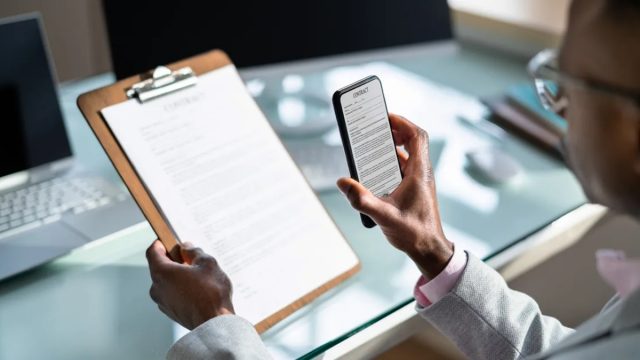Technology is one of the important factors, which shapes rapidly changing digital environment as it changes many aspects of our life. One technology that revolutionized the field of human-textual interaction is optical character recognition (OCR). OCR technology is applied in several areas of industries including making things easier for handicapped people and simplifying data entry. We will examine the top five benefits and applications of OCR technology in this blog post, shedding light on the significant influence this technology has on contemporary culture.
1. Simplifying the Digitization of Documents
Contents [show]
The era of laborious transcription work and manual data entry is long gone. With unmatched efficiency, OCR technology enables both people and corporations to digitize large amounts of printed documents. OCR saves time and resources by turning scanned images or PDF files into editable and searchable text, doing away with the need for manual input. OCR expedites the document digitization process, promoting improved accessibility and preservation of important information, whether it is processing invoicing, scanning historical archives, or turning old books into electronic formats. Hence, use of a reliable Image to text converter is necessary to achieve desired outcomes.
2. Improving the Extraction and Analysis of Data
In the information-driven world of today, in order to make informed decisions it is necessary for one to extract useful ideas from large databases. OCR technology is required for this process because it allows extracting text from documents, images as well as videos with ease. OCR enables automated data analysis by transforming unstructured data into structured formats, speeding up processes like sentiment analysis, trend forecasting, and market research. OCR enables businesses to realize the full potential of their data assets, whether it’s through reviewing handwritten forms for demographic trends or extracting important information from receipts for expenditure tracking.
3. Improving Business Process Efficiency
When it comes to businesses, efficiency is everything. This is where OCR shows off its digital prowess:
Processing of Invoices
OCR provides comfort to accounts payable departments that are fatigued from manual data entry. It extracts vendor names, amounts, and due dates from scanned invoices. What was the outcome? data population in accounting systems that are automated. Errors decrease, output rises, and accountants silently applaud.
Extracting Data from Forms
OCR pulls important data fields from documents such as job applications, consumer surveys, and medical records. Just think of the relief: quick data collection instead of time-consuming form filling.
Automating the Management of Records
Legal contracts, patient records, and employee information are all safe in OCR’s digital embrace. It easily obtains, indexes, and categorizes materials. Need that illusive three-year-old contract? OCR presents it with an electronic flair.
4. Enhancing Recognition of Text in Image Processing
Accurate text recognition is crucial for many applications in the fields of image processing and computer vision, including augmented reality and automatic license plate recognition. Because OCR technology offers reliable algorithms for identifying and extracting text from photos and video streams, it is essential in this field. OCR extends the capabilities of image processing systems, enabling creative solutions across a range of industries, from reading handwritten notes in digital classrooms to extracting text from street signs for navigation systems.
5. Increasing Security and Compliance
In a time when worries about data privacy and regulatory compliance are on the rise, OCR technology shows itself to be a useful tool for businesses looking to protect sensitive data and follow strict compliance guidelines. Through the conversion of scanned documents into text that can be searched, OCR helps businesses put in place reliable document management systems that make information retrieval and safe storage easier. Additionally, OCR improves the precision of data redaction procedures, guaranteeing that private information, like financial or personal identifiers, is appropriately hidden before sharing or archiving documents. This reduces the possibility of data breaches and noncompliance with regulations.
How Does Optical Character Recognition Operate?
Three principles hold the key to the magic: purposefulness, adaptability, and integrity (IPA). OCR examines scanned images like a devoted detective. Pages are broken down into lines, words, and characters. It then creates theories by consulting its mental library, which consists of the patterns (fonts) that have been stored. Chances dance, and the identified text appears. This magic is driven by two algorithms: feature extraction and pattern recognition. While the latter finds distinctive features inside characters, the former compares scanned items with character libraries.
Ending Note
OCR technology has many uses and applications in different fields, making it much more beneficial than just text recognition. OCR technology allows organizations and persons to achieve new records of productivity, inclusion, and efficiency by streamlining document digitization, enhancing data extraction through superior accuracy rate which results in the improved flow of information for better decision-making process alongside promoting accessibility as well ensuring compliance. Given that OCR technology is revolutionary, it could change the way we interact with content in terms of written text as technology develops; hence opening up avenues to a more connected and information-rich future.


